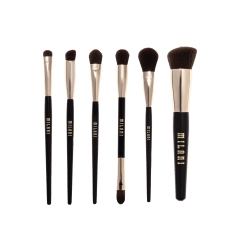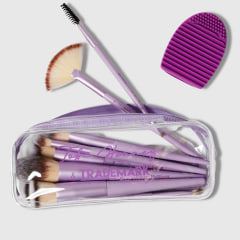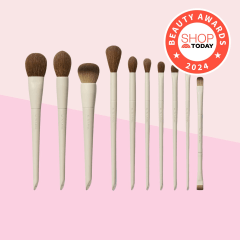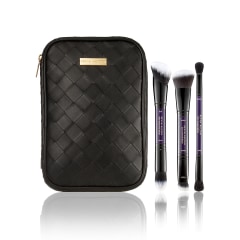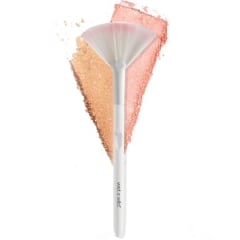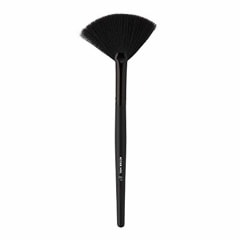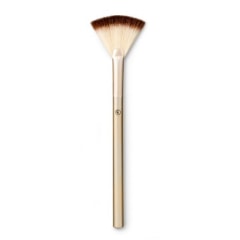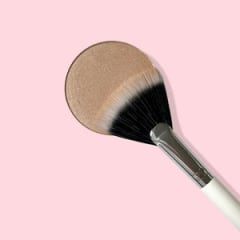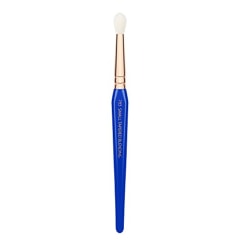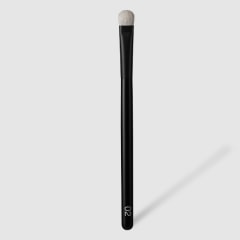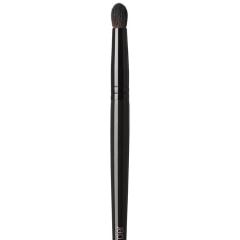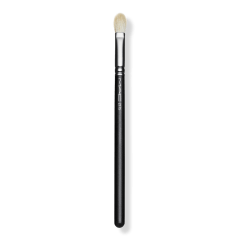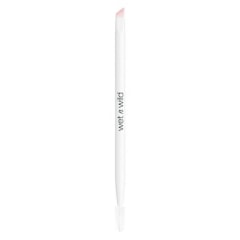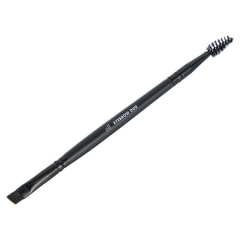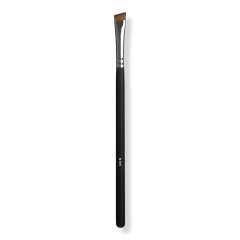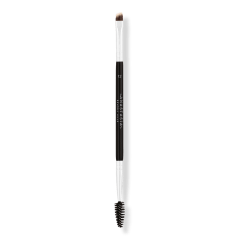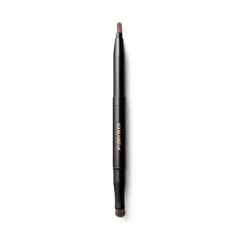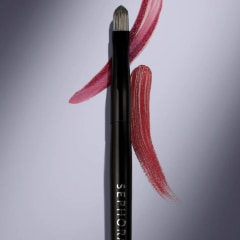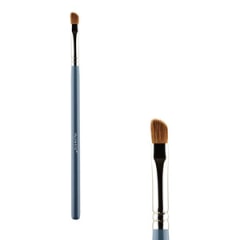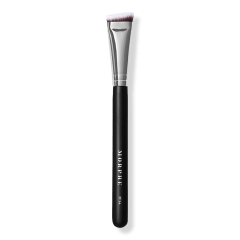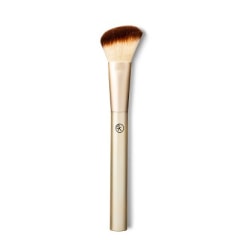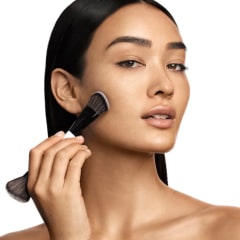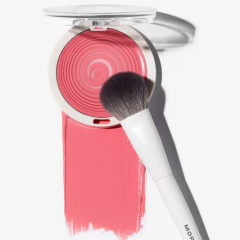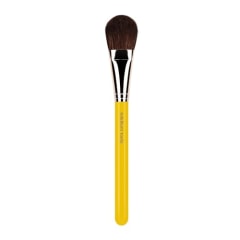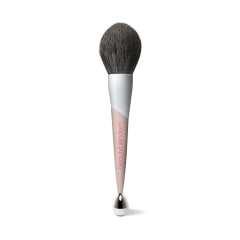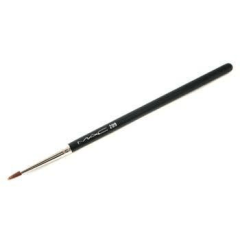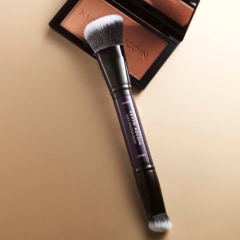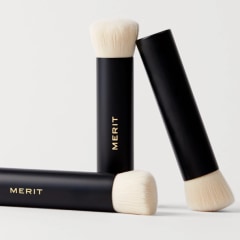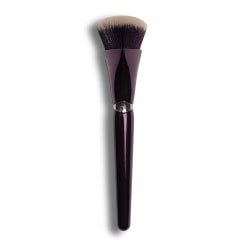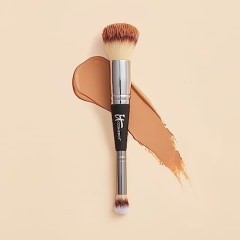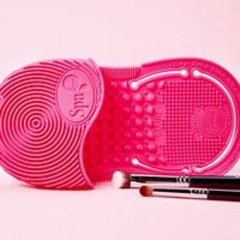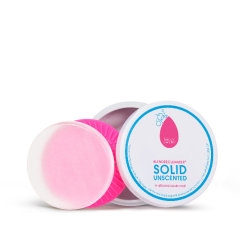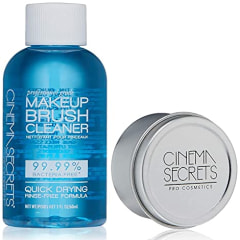Shop TODAY independently determines what we cover and recommend. When you buy through our links, we earn a commission. Learn more.
How to choose (and clean) your makeup brushes, according to experts
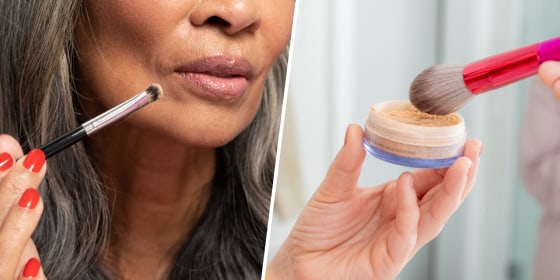
Whether you have an entire makeup vanity or a simple bag full cosmetics, there’s one essential that every makeup-wearer needs: brushes. Sure, you can use a Beautyblender and your fingers, but makeup brushes can take your look to the next level.
“Finding the right brush size, shape and texture is key to applying makeup to the different areas you’re using them on,” says New York City-based celebrity makeup artist Neil Scibelli. “Makeup brushes can be used in so many different ways, and that’s the beauty of them — the creativity and artistry is in your hands.”
To help you achieve the look of your dreams, we spoke with several makeup artists about everything makeup brushes — from how to use them to how to clean them.
Fan brush | Eye shadow | Eyebrow | Lip | Contour | Blush | Concealer | Foundation | Cleaning tips | How we chose | Meet the experts
Makeup brush sets
Morphe x Ariel Signature Look 12-Piece Set
Winner: Best splurge makeup brush set
$98.00
Ulta
$98.00
Morphe
Types of makeup brushes and how to use them
The construction of a brush makes all the difference in how you use it and what it's used for. We asked Scibelli and other makeup artists for the best tips for each brush you can find in their kit.
Fan brush
Fan brushes are typically used to apply highlighter. You can lightly dust your cheekbones, down your nose, cupid's bow (center above your top lip), inner corners of the eyes and along the brow bone to get a natural glow.
Makeup artist Lindsey Trop says it's as easy as dipping the brush into your highlighter of choice and swiping it wherever you want a bit more radiance.
Eye shadow brush
Eye shadow brushes come in a range of sizes and can be used in various ways. There are three different types of eye shadow brushes you’ll want to keep in mind: packing, blending and detail.
- Packing brushes: These have a "flatter, dense dome shape which is ideal for depositing pigment/shadows onto the eyelids,” says Olga Shikhris, makeup artist and licensed esthetician.
- Blending brushes: Shikhris says these have a "soft, tapered ponytail-like design which allows you to apply shadow directly into and above the crease in a windshield wiper motion.”
- Detail brushes: These are typically tight, small and often pointy to allow you to get into smaller areas like the inner-eye corner or the lash line.
Eye shadow brushes
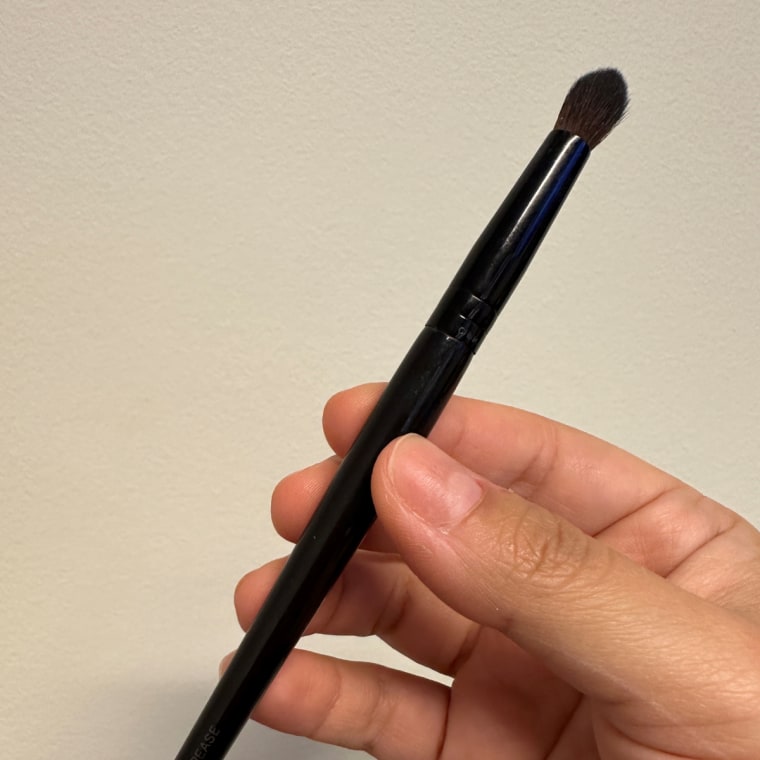
Eyebrow brush
A makeup look isn’t complete without eyebrows. Makeup artist Carmindy Bowyer says there are two different types of eyebrow brushes: a spoolie and an angled brush.
“A spoolie brush is used to groom the brow hairs and keep them in place,” says Bowyer. “The other eyebrow brush is a stiff and flat slanted angle brush that is designed to lay down powder, colored wax or liquid brow corrector to fill in and shape them.”
Eyebrow brushes
Lip brush
A lip brush lays down lipstick evenly and allows the product to get right into the lip line and the corners of the mouth. “If you just apply your lipstick straight from the bullet you can miss a few spots,” says Bowyer. “Lip brushes are also good for blending together a lip liner with your lipstick [and] smoothing the edges, so you don’t get that ring around the mouth look.”
Contour brush
Contour is most commonly applied along cheekbones, hairline, down the sides of the nose and the jaw line. “The secret to a great contour brush is having enough fluff to have a subtle feathered application but tight enough to get a nice edge,” says celebrity makeup artist Brett Freedman.
Did you know there are techniques for contouring different face shapes? Jenny Patinkin, makeup artist and founder of her namesake brand, shares some tips to achieve a lifted look with contour for various face shapes:
- Round: Contour under the cheekbone — lined up under the center of the eye — extending back to the ears and then up a little into the temples. This breaks up the planes of the face so that cheekbones look higher and the temples look a little recessed.
- Heart: Contouring into the temples and across the forehead can balance a heart-shaped face and adding a little shading under the chin can soften a sharp point.
- Oval: Apply a little contour under the cheekbones. Moving straight back to the ears cuts the plane of the face and gives the cheekbones more definition. On the jawline, she likes to create a more triangular shape by connecting the line of contour up to the bottom of the ear.
- Diamond: Patinkin recommends applying just a little bit of contour under the cheekbones, almost in the hollow of the cheeks. Line it up under the center of the eyes and move it out towards the ears to create a slimmer appearance on the widest part of your face.
- Square: Apply contour on the outer part of the jawline and the outer part of the forehead/temples to soften the corners. Apply it on the cheeks and move it in an upwards and outwards angle to create the illusion of height and lift.
- Oblong: Contour around the hairline, temples, along the outer part of the jawline and on the underside of the chin. Patinkin suggests keeping contouring the cheeks minimal on this face shape, instead focusing quite a lot of blush and highlighter on the apples of the cheeks to create a more dimensional, rounder look.
Contour brushes
Blush brush
Blush is supposed to be placed on the cheek bones for a rosy, flushed look. “Apply blush by smiling first and use a big fluffy powder size brush to sweep [it] right on the apples of the cheeks and back to the hair line,” says Bowyer. “This size brush hugs the apples and easily applies the right amount for a natural flush. To apply, brush in a soft upwards motion with a sweep ending [adjacent to] the top of the ears for a lifted effect.”
Concealer brush
Concealer brushes are either flat, rounded or tapered. “Concealer brushes are used to conceal imperfections by precisely targeting spots [and] blemishes, most commonly covering under eye discoloration,” says Shikhris.
They come in many shapes and sizes so the one you choose boils down to personal preference and/or the area you are applying it. When applying to spots, veins, bruises, scars, undereye circles and sunspots, Bowyer recommends using stick concealers to tap on the product after foundation and using your finger or a small tapered brush to blend it.
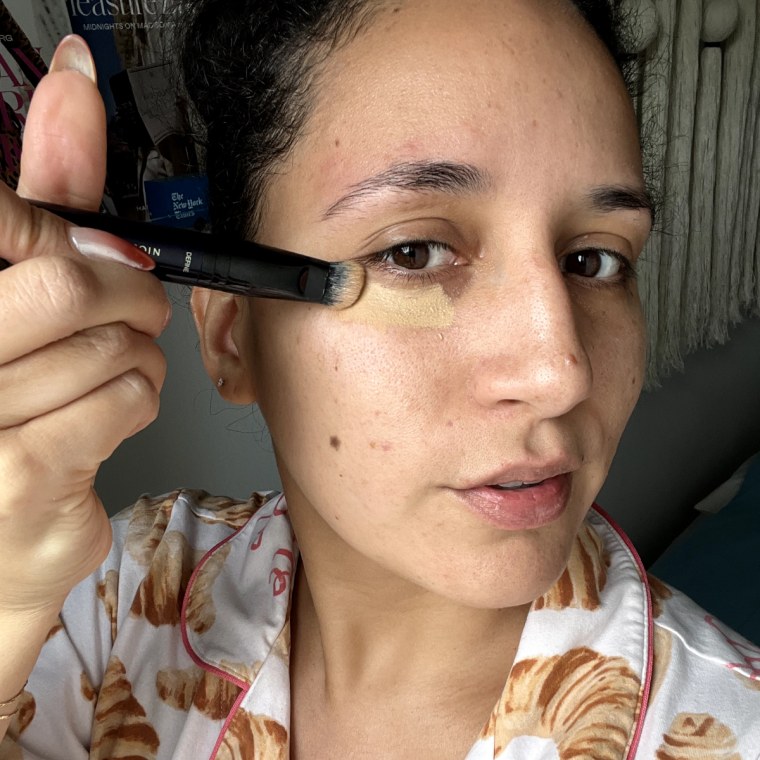
Foundation brush
A foundation brush is a great option for applying cream-based complexion products. They’re typically made of synthetic bristles and are flat like an eye shadow brush, but larger. “I like to use a foundation brush in a patting motion so that you’re not swiping the product around too much — which can sometimes cause streaking,” says Scibelli.
While you can use a beauty sponge instead of a brush to apply your foundation, celebrity makeup artist Stevi Christine says a brush soaks up less of the product, so you get more output.
Foundation brushes
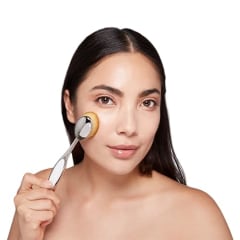
How to clean makeup brushes
According to Freedman, makeup nowadays is much more pigmented and the staying power is longer, so cleaning brushes is more necessary than it’s ever been. “Dirty brushes can lay on muted colors, leave a chalky or uneven texture and spread bacteria causing breakouts, rashes or clogged pores,” adds Bowyer.
Knowing how important it is to keep our brushes clean, the pros shared a few of their favorite products and methods for keeping them pristine.
“I love using a gentle makeup removing soap with a cleansing mat,” says Scibelli. “I personally use a solid makeup removing bar soap, dip it into lukewarm water, then cleanse the brushes on a cleansing mat.”
Shikhris recommends using Cinema Secrets Makeup Brush Cleaner to clean makeup brushes. “It removes all types of makeup from the bristles, disinfects and dries instantly,” she says. “For deep cleaning, I strongly recommend shampooing brushes and using Cinema Secret at least once a month.”
Products to clean makeup brushes
How we chose
The Shop TODAY editors and writers search the internet to find the best products out there. We interview expert sources, comb through customer reviews and even use our own personal experiences to make shopping easier for our readers.
Meet the experts
- Neil Scibelli is a New York City-based celebrity makeup artist. He has previously spoken with Shop TODAY about the best makeup products for mature skin, the best lipsticks and the beauty products that are worth splurging or saving on.
- Carmindy Bowyer is a makeup artist, author and founder of her namesake beauty brand.
- Olga Shikhris is a New Jersey-based makeup artist and licensed esthetician.
- Stevi Christine is celebrity makeup artist and brow artist with over 15 years of experience.
- Lindsey Trop is a Connecticut-based makeup artist.
- Brett Freedman is a Los Angeles-based celebrity makeup artist and founder of his namesake brand.
- Jenny Patinkin is an award-winning makeup artist, author and founder of her namesake brand.


